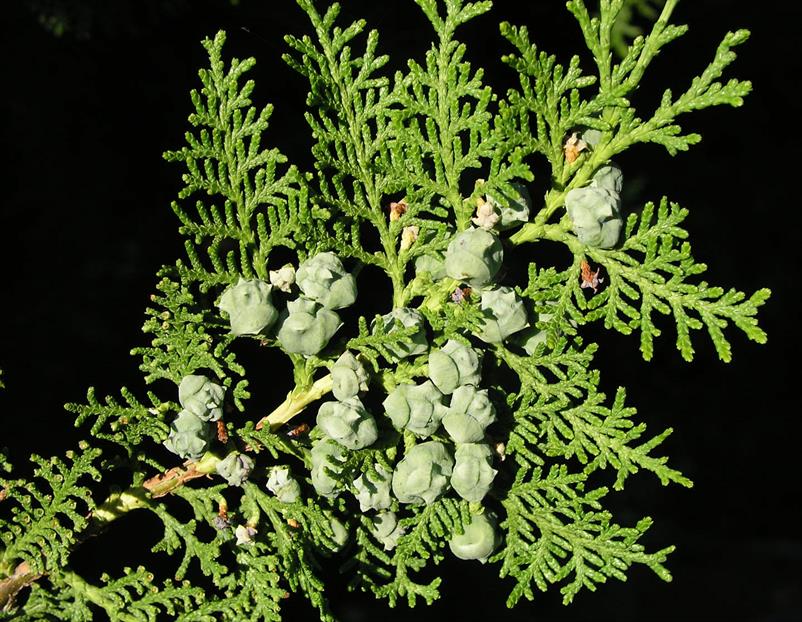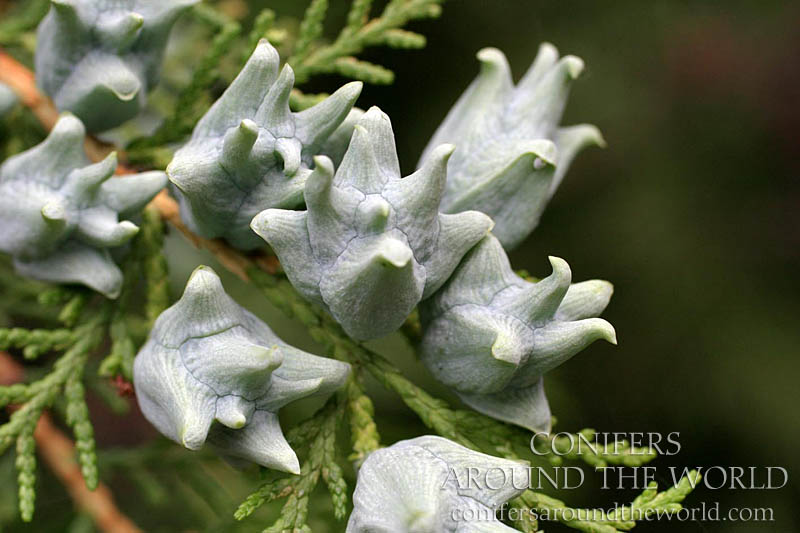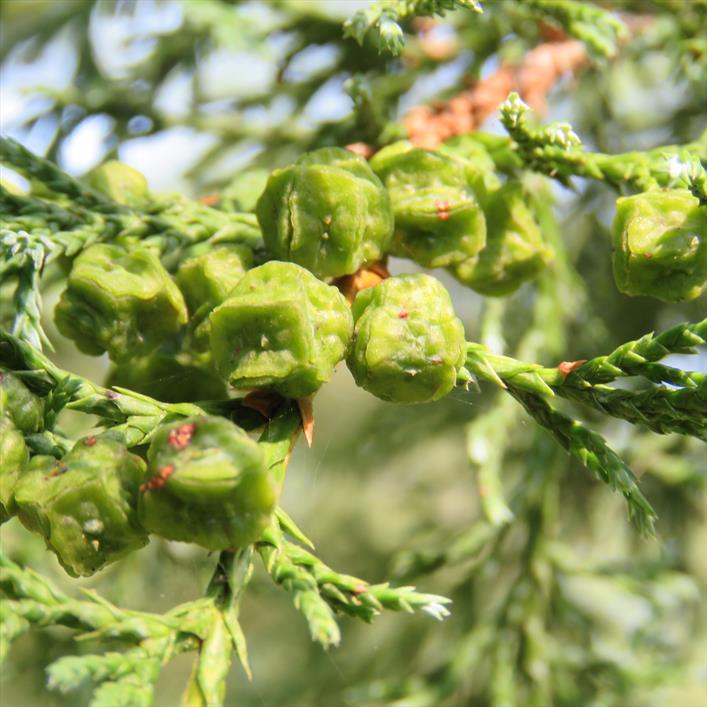Chinese Thuja
Platycladus orientalis
Cypress family (Cupressaceae)
Resistant to air pollution, but not to logging
This robust, slow growing conifer can reach a maximum height of 16 m. When young the conifer is compact but becomes wider and less compact with age. The trunk is red-brown which peels in narrow strips. In China the wood has been used for centuries to build houses and temples. Its wide distribution and its cultivation are based on the use of its leaves - they produce an incense-like aroma when burnt similar to that of Thuja. This species was originally placed in the Thuja genus.
Platycladus orientalis is probably the most planted conifer in Asia. It can often be found near oriental monasteries and temples. In southwest China it frequently occurs on steep river valley slopes. It is also used in reforestation. Today this species can often be found in parks and gardens in temperate regions of Asia. It can tolerate drought and withstand the level of air pollution found in Chinese cities. Platycladus orientalis has also been popular in Europe since its introduction in 1737.
Read more.... »Themes
This tree has spread far and is widely cultivated because of its leaf, which releases an incense fragrance when burned.
The oriental arbovitae can often be found near oriental monasteries and temples.
In China the wood has been used for centuries to build houses and temples.
Details
| Description: | Conifer, up to 16 m. |
|---|---|
| Distributions: | Mongolia, northeast china, siberia, tajikistan and uzbekistan. |
| Habitat: | In disturbed ancient woodland and particularly in secondary forests; a successful pioneer on relatively dry, open and unstable slopes. |
| Year cycle: | Perennial (polycarpic evergreen) |
| Hardiness: | Colder than -4 f (very hardy) |





